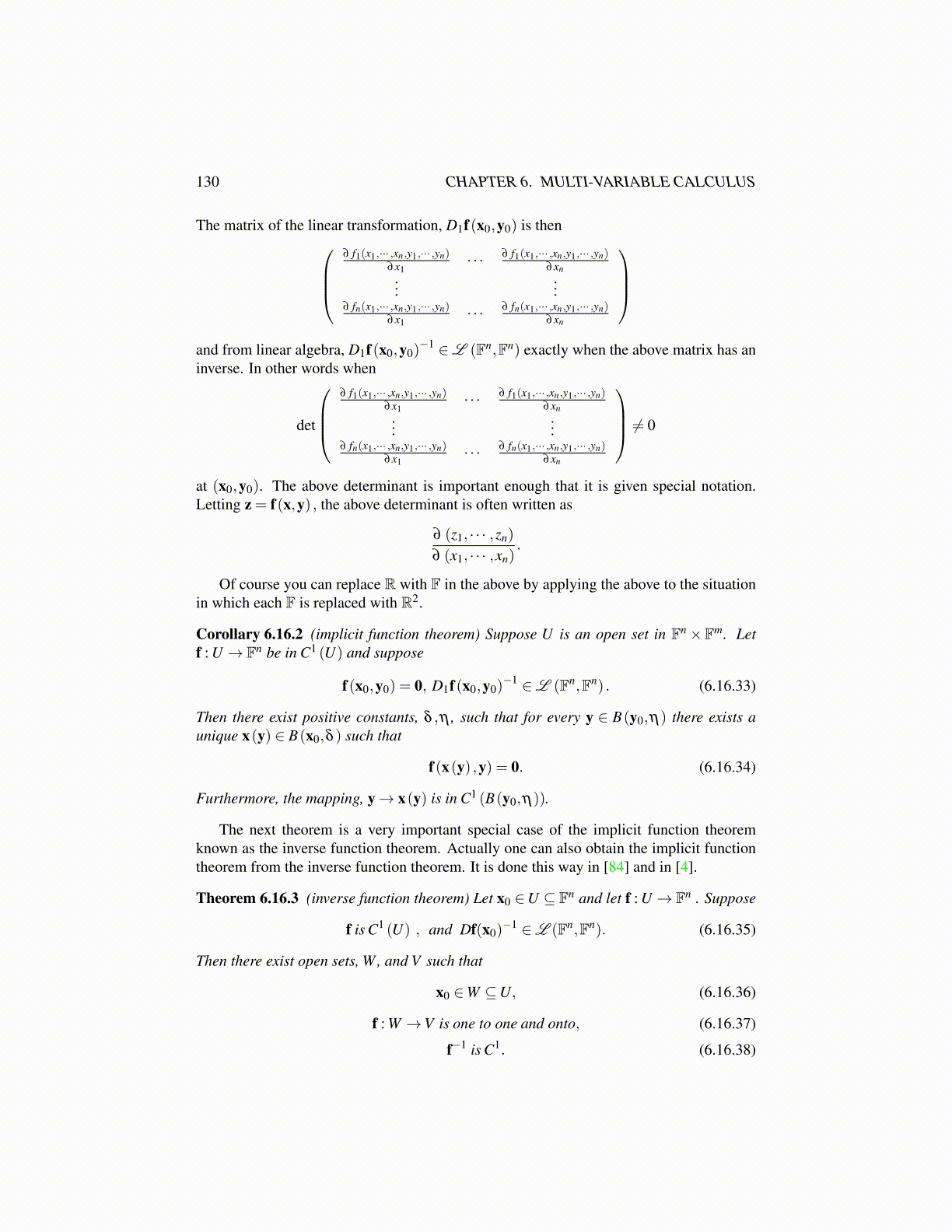
130 CHAPTER 6. MULTI-VARIABLE CALCULUS
The matrix of the linear transformation, D1f(x0,y0) is then∂ f1(x1,··· ,xn,y1,··· ,yn)
∂x1· · · ∂ f1(x1,··· ,xn,y1,··· ,yn)
∂xn...
...∂ fn(x1,··· ,xn,y1,··· ,yn)
∂x1· · · ∂ fn(x1,··· ,xn,y1,··· ,yn)
∂xn
and from linear algebra, D1f(x0,y0)
−1 ∈L (Fn,Fn) exactly when the above matrix has aninverse. In other words when
det
∂ f1(x1,··· ,xn,y1,··· ,yn)
∂x1· · · ∂ f1(x1,··· ,xn,y1,··· ,yn)
∂xn...
...∂ fn(x1,··· ,xn,y1,··· ,yn)
∂x1· · · ∂ fn(x1,··· ,xn,y1,··· ,yn)
∂xn
̸= 0
at (x0,y0). The above determinant is important enough that it is given special notation.Letting z = f(x,y) , the above determinant is often written as
∂ (z1, · · · ,zn)
∂ (x1, · · · ,xn).
Of course you can replace R with F in the above by applying the above to the situationin which each F is replaced with R2.
Corollary 6.16.2 (implicit function theorem) Suppose U is an open set in Fn×Fm. Letf : U → Fn be in C1 (U) and suppose
f(x0,y0) = 0, D1f(x0,y0)−1 ∈L (Fn,Fn) . (6.16.33)
Then there exist positive constants, δ ,η , such that for every y ∈ B(y0,η) there exists aunique x(y) ∈ B(x0,δ ) such that
f(x(y) ,y) = 0. (6.16.34)
Furthermore, the mapping, y→ x(y) is in C1 (B(y0,η)).
The next theorem is a very important special case of the implicit function theoremknown as the inverse function theorem. Actually one can also obtain the implicit functiontheorem from the inverse function theorem. It is done this way in [84] and in [4].
Theorem 6.16.3 (inverse function theorem) Let x0 ∈U ⊆ Fn and let f : U → Fn . Suppose
f is C1 (U) , and Df(x0)−1 ∈L (Fn,Fn). (6.16.35)
Then there exist open sets, W, and V such that
x0 ∈W ⊆U, (6.16.36)
f : W →V is one to one and onto, (6.16.37)
f−1 is C1. (6.16.38)